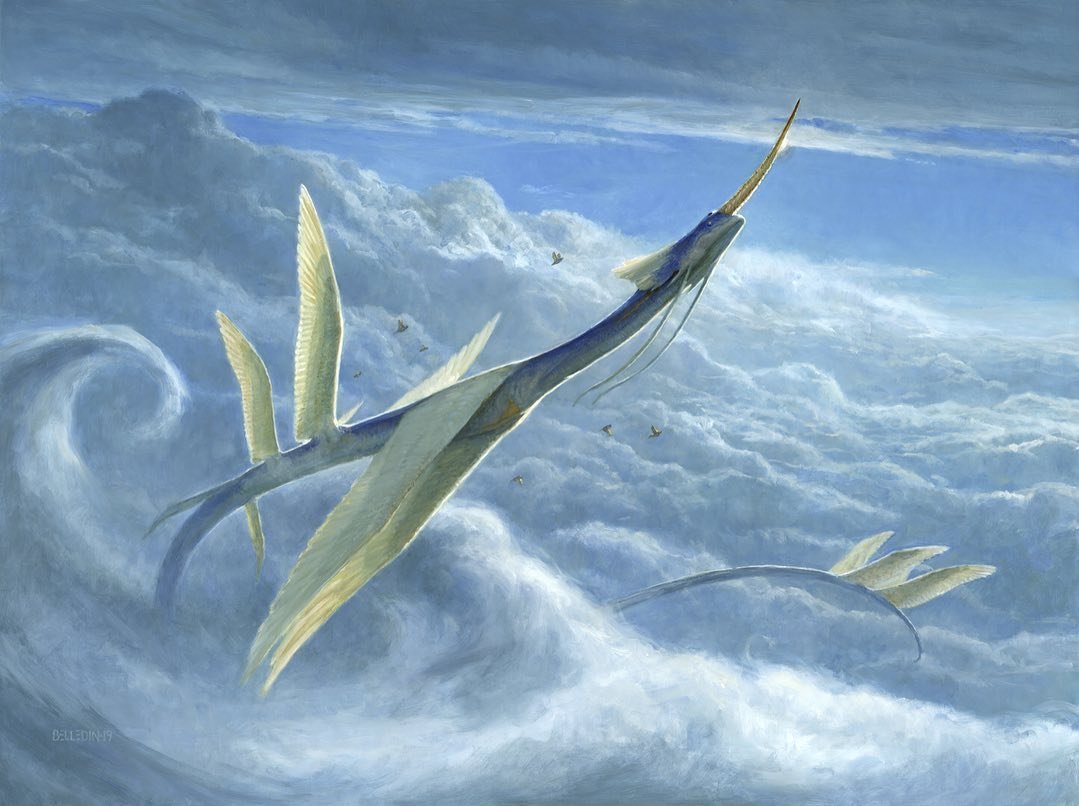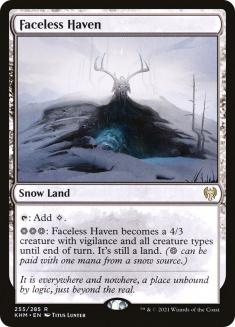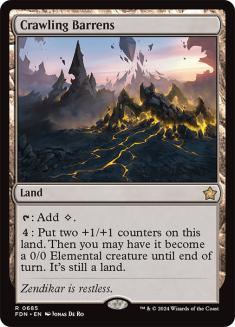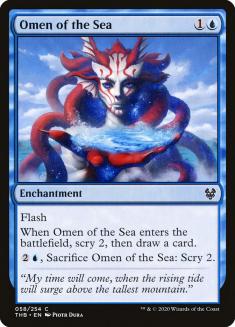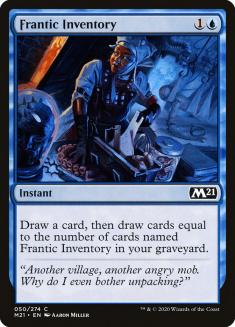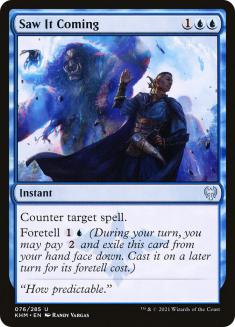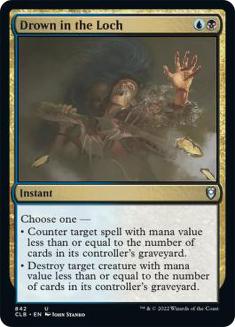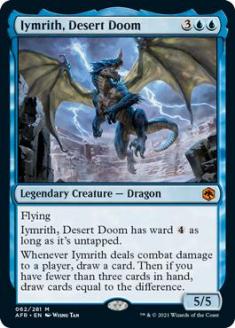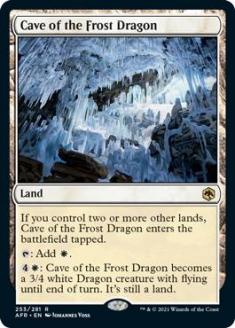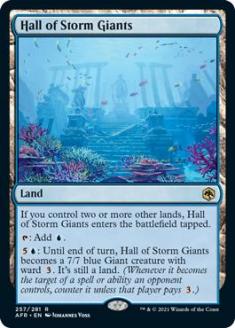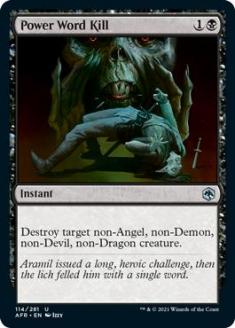Although we’re witnessing the powering down of Standard, we will not reap the benefits until rotation. Too many powerful elements continue to dominate the format, even with the bannings that took place months ago. Unfortunately for the control team, ramp has all the broken cards. If aggro decks were the only beneficiaries of these developmental mistakes, it would be smooth sailing for us blue-disruption fans. The sweepers, card draw, and disruption are good enough to make control viable in normal circumstances. With one of the dominating decks being ramp-based, control pieces must exceed good and move into legendary.
Adventures in the Forgotten Realms has provided control many tools that I will immediately take advantage of. As the previews rolled in, I felt a bit disgruntled at the lack of cards that fell into my wheelhouse. Quantity is not what we’re getting here. The creature-lands are going to go in every deck; however, control needed them the most. Most aggro decks had access to Faceless Haven, arguably as good as the wave that this new set has carried over. The heavy snow requirement of Faceless Haven and its colorless production, like Crawling Barrens that control has used for a while, makes the new creature-lands more palatable. Tapping for colored mana is a normal requisite for me, especially when I dip back into my favorite shard.
Esper Control is where I’m starting off with Adventures in the Forgotten Realms Standard. That said, I’m not convinced it’s better than Dimir Control. As the earliest and biggest fan of Vanishing Verse, it feels irresponsible not to put it in the starting lineup. The true believers who have stuck with control during these rough times know the power of the Orzhov removal spell. For two-mana, it hits many problematic threats that plague us, ranging from early-game aggro creatures to late-game midrange planeswalkers. It’s a wonderful answer-all that has reduced our dependence on Elspeth Conquers Death, especially when five mana is too much to exile something from turns before.
Yorion, Sky Nomad is the captain of the control ship still, whether we move forward with Dimir or Esper Control. The 80-card norm has given us the freedom to include a much wider variety of disruption than usual. The cost is a little less consistency in drawing our best spells and a lifetime deal with Omen of the Sea. The latter is an acceptable sacrifice, even though it resulted in the death of Frantic Inventory. Frantic Inventory was the collateral damage of Yorion, since it would be the card draw spell of choice otherwise. Outside of Omen of the Sea, Yorion provides value to an array of permanents that control utilizes, making it a non-negotiable inclusion until it rotates.
Adding the white splash to Dimir Control is painless. The manabase, from two- to three-color, is fine if there’s no rush to hit double colored mana for each option. That’s where I fell with this version Esper Control, editing the manabase with a few creature-lands while ensuring the drawing of a single white source early on. The new creature-lands all enter the battlefield untapped in the early-game, making them like the fastlands of old.
I always thought that design was great, adding the perfect amount of punishment for not drawing them at an opportune time. They do not assist Esper Control in casting spells, but they do save us from running a bunch of Crawling Barrens, or no creature-lands at all. There have been countless scenarios where a creature-land would have solved all my problems, with their ability to pressure life total and a planeswalker, while having mana open for disruption. Shark Typhoon is the closest thing we have had to make that work, but the control game is about to change.
Creatures (3)
Planeswalkers (2)
Lands (35)
Spells (40)

Much has changed in how we build control decks these days. The aggro and ramp decks are so powerful that each demands equal attention in Game 1. This variation of Esper Control runs a pile of two-mana removal spells to have a fighting chance against decks that swarm the battlefield. Using Extinction Event and Doomskar can bail you out occasionally, but not always. Drawing them in an 80-card deck is hard enough; then you must hope that the creatures share a mana value. Doomskar is better at this than Extinction Event; however, some threats require exiling. Outside of the exile upside, Extinction Event is easier to cast in Esper Control, especially with a manabase that leans heavily toward Dimir.
In conjunction with all those removal spells, Esper Control stacks the blue disruption at a near-equal rate. Drown in the Loch, Negate, and Saw It Coming provide a shield against the ramp/control decks that are currently topping the charts. Normally I would be ecstatic about running maindeck Negate, but not here. It’s a necessary evil to have a chance against Sultai Ramp (Yorion), as the noncreature spells it summons are devastating. The sideboard adds blue and black disruption to increase the odds of victory against this thorn in my side, enlisting help from Duress, Agonizing Remorse, and Mystical Dispute. With all these elements combined, the matchup is close to even, which is about as good as it gets. Any additional manipulation of the maindeck and sideboard to beat Sultai Ramp will push our better matchups, aggro specifically, closer to the red.
Even though aggro is strong in Standard, Esper Control beats up on it consistently. This includes Mono-Red, Mono-White, Mono-Green, Mono-Black, and Rakdos. These linear aggro decks run into a consistent wall of removal, decent sweepers, and improved win conditions that hold up well on the battlefield. The aggro decks that have a strong mid-game, like Dimir Rogues and Temur Adventures, make life much more difficult for Esper Control. When the opponent has blue disruption, card advantage, and more resilient threats, it’s not a walk in the park for any control strategy. The game-changer that will improve matchups across the board is Iymrith, Desert Doom.
Iymrith is as close as we’re getting to Dragonlord Ojutai and I’m fine with that. It’s a win condition that I can get behind, one that costs less than Dream Trawler and packs just as large of a punch. The 5/5 body of this Dragon is impressive, entering the battlefield on Turn 5 and holding down the fort well on its own. With just a few removal spells prior, Iymrith can prevent the remaining enemy attackers from coming through. It essentially has hexproof the turn you drop it with ward 4, making any removal spell that targets it uncastable the turn it hits the battlefield. With that type of resiliency, control finally has the win condition it has needed for months.
Dream Trawler is still a great win condition, but Iymrith may be better overall. Esper Control has the capacity to cast both; however, the mana cost of Dream Trawler can still be prohibitive. Double-white is not a guarantee, nor is the extra turn required to bring it to the battlefield. The lifelink is the only aspect that makes the debate relevant, even though the burst-damage aggro decks are in the easier matchup category. If lifegain is a must, Esper Control has four copies of Mazemind Tome, which provides card advantage as well. Cling to Dust is another usual suspect in control decks these days, giving a lifeline to those that need a few more life points to successfully get through the game. These are not as efficient as Dream Trawler in that category, but they do other great things for much less mana.
The card advantage that Iymrith provides, at minimum, matches Dream Trawler. It can draw up to three cards when resources are low, making it a game-changer late. Even when it only draws one card, which will be the case often, is enough to make it great most of the time.
The part of Iymrith that will make it a control staple moving forward is the power and toughness, with it having enough to easily kill an opponent on its own, while being able to block enemy creatures on defense. Esper Control will start off with three copies; however, I can easily see it move to four to ensure drawing it. Drawing multiples is not too much of a negative since the game will be over quickly if the original is not dealt with. Out of all the changes Adventures in the Forgotten Realm will bring, I’m most excited about this rebirth of Dragonlord Ojutai.
The creature-lands that you see employed are chosen from convenience. The manabase only allows for a certain lands to get swapped out, while maintaining the consistent manabase. I’m a huge fan of Cave of the Frost Dragon, even though there are none in my list. The one Castle Ardenvale that remains is important to the gameplan, while Castle Vantress was an easy cut for Hall of Storm Giants. Hall of Storm Giants is great for Esper Control as well, providing the user a Giant that can easily smash through defenses with partial protection. The evasion of Cave of the Frost Dragon may make it better in a heads-up competition, although it was much easier to find room for the blue option.
Hive of the Eye Tyrant found its way into the lineup for the same reason as described above. There’s potentially another spot for a second one, at the cost of another Swamp. I want to test out the manabase more, to ensure that these new creature-lands are as seamless as they appear before I dig farther into the basic land count. Hive of the Eye Tyrant may be the weakest out of the bunch, but with the demand for untapped black-producing lands early, it was also the most practical.
The final addition from the new set was Power Word Kill. This replaced Eliminate as the superior removal spell that could stretch from the early- to late-game more effectively. The three-mana planeswalkers of the format have not been used in any capacity, making Eliminate a single-purpose removal spell. Since it was a popular sideboard option, it only came in to strengthen the early-game defenses against fast aggro decks, which Power Word Kill can do as well.
The big difference is the application of Power Word Kill in the mid- and late-game, taking down creatures that exceed the mana value of three and providing Heartless Act some assistance when it’s overwhelmed. This new removal spell, added to the ranks of Heartless Act and Vanishing Verse, provides Esper Control a powerful arsenal against the best aggro and midrange decks of Standard.
I’m not convinced that adding the white splash to Dimir Control is the best course of action yet. Vanishing Verse is as good as advertised, making the focus land on the strain a third color adds to the manabase. In my experience with this deck, the manabase is rock-solid, with the only negative being how many of its lands must enter the battlefield tapped. Even in the two-color control variants, Dismal Backwater is necessary to ensure access to double colors, so the addition of a few more of those lands is not the end of the world. I will test both Dimir and Esper Control heavily in the next few weeks to decide.
At this point, the odds are stacked against control, regardless of which archetype prevails. Until Sultai Ramp (Yorion) takes a significant hit, we will have to stack our decks full of blue disruption to keep the matchup close.

